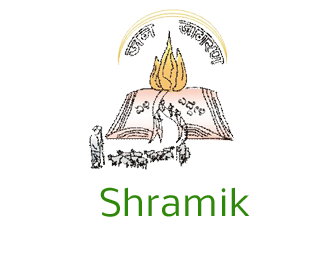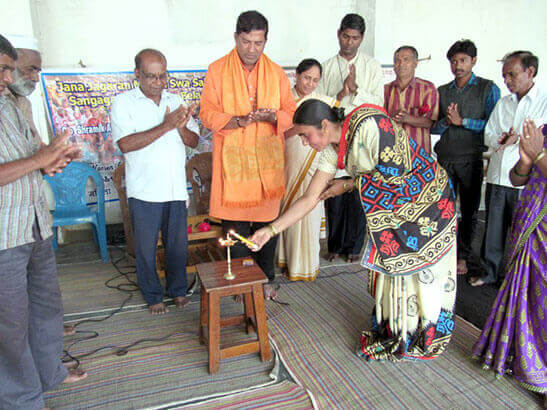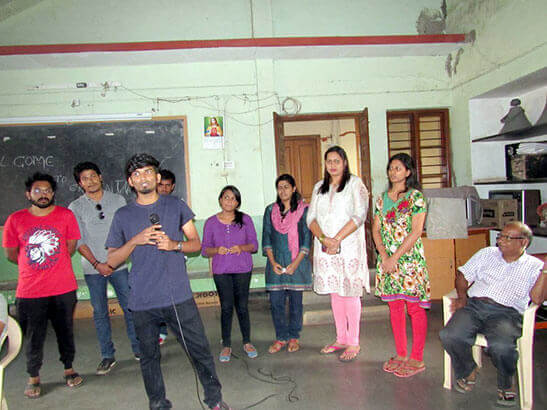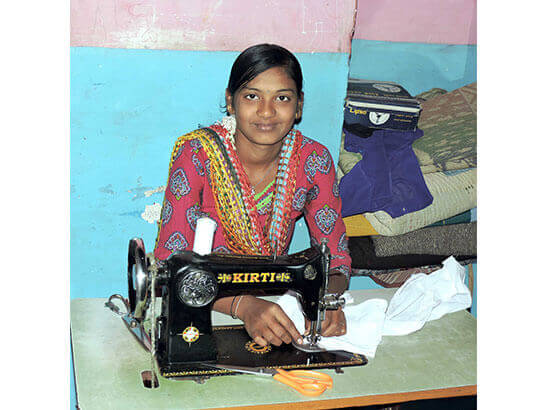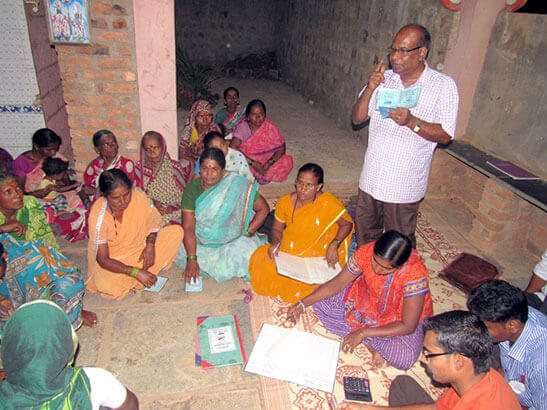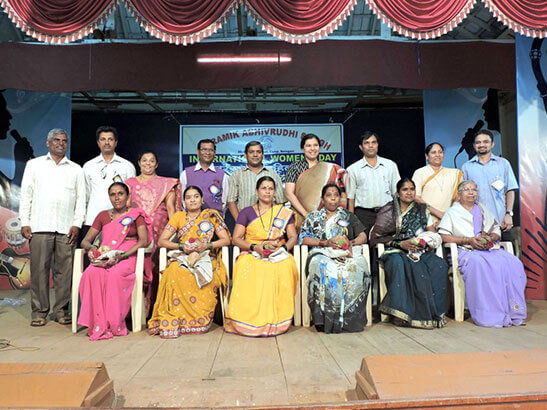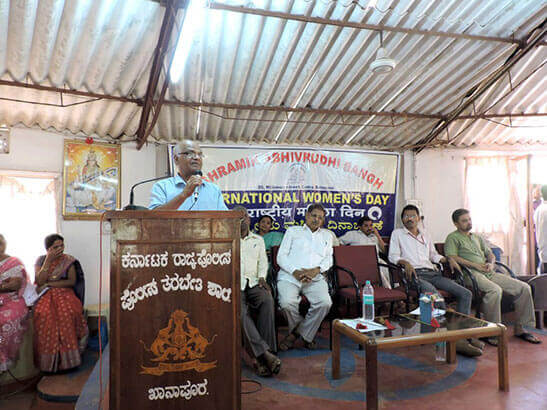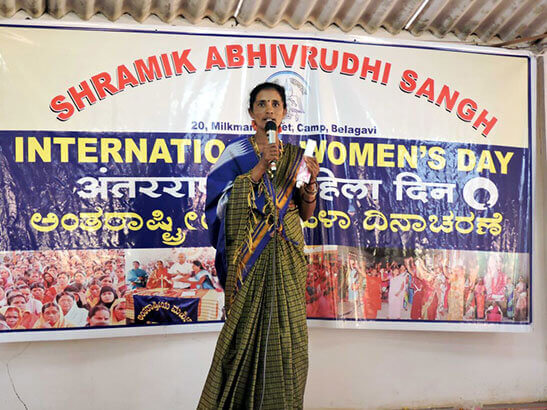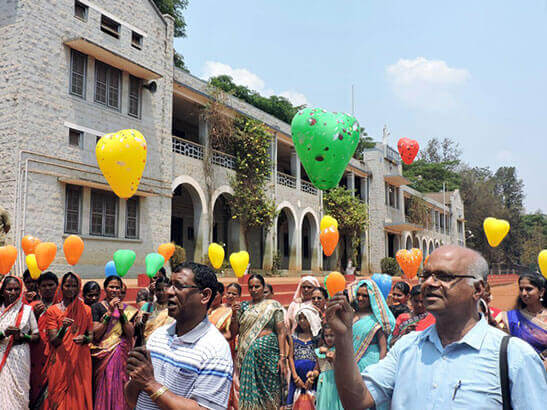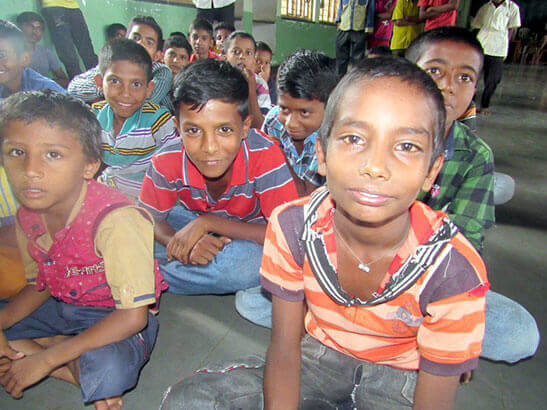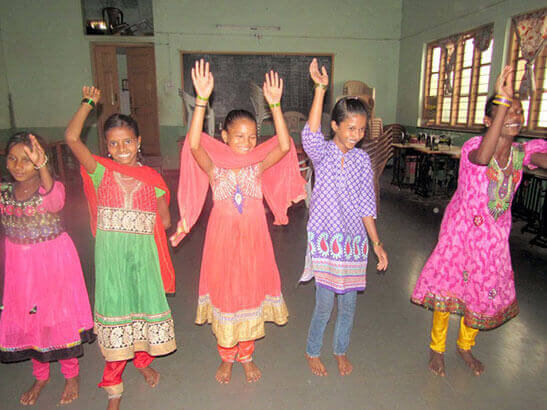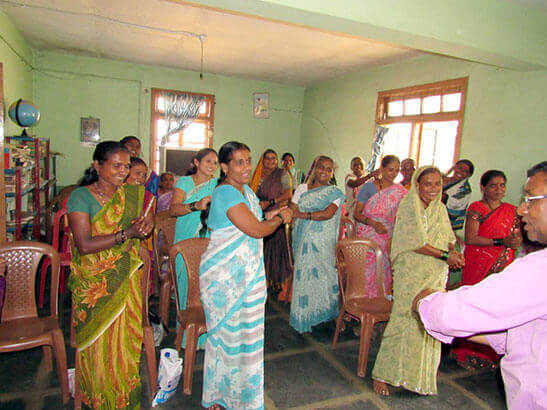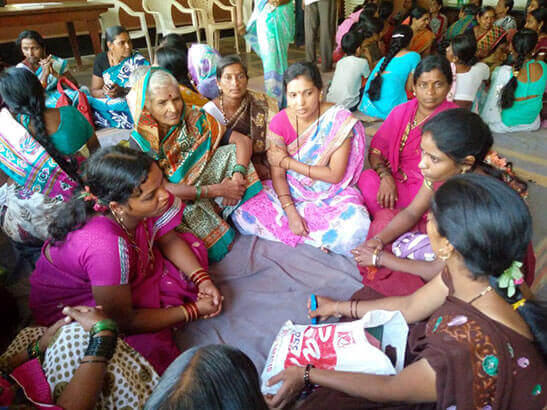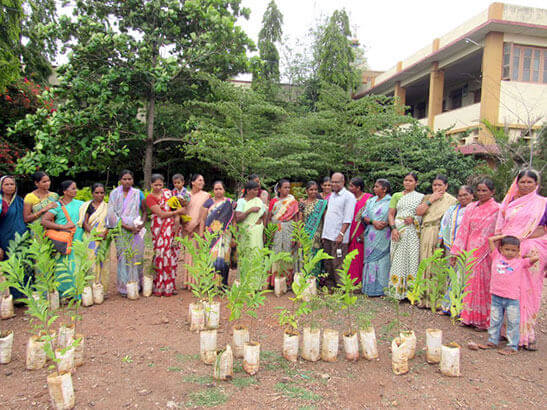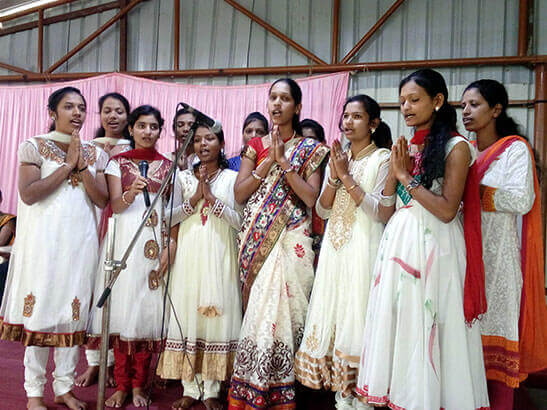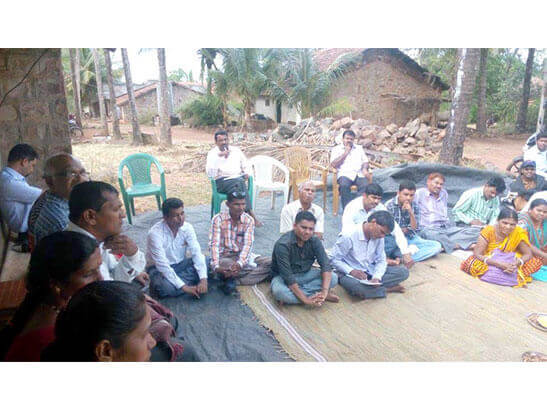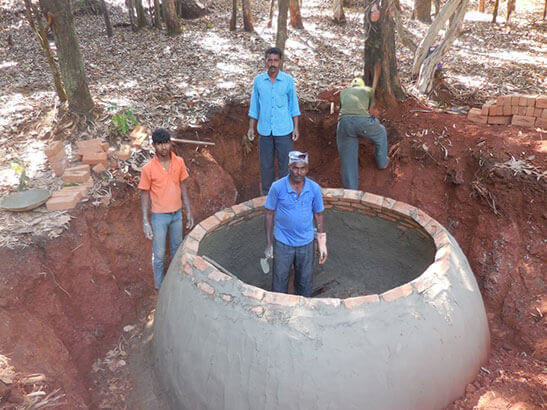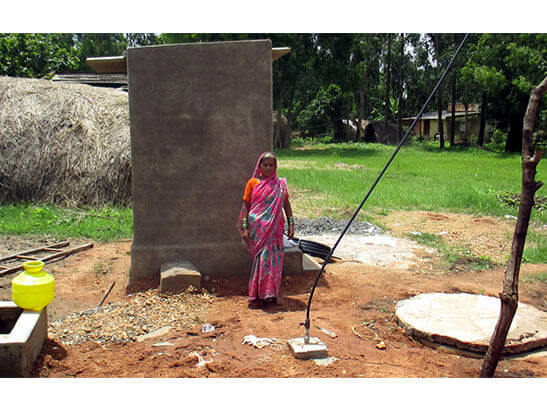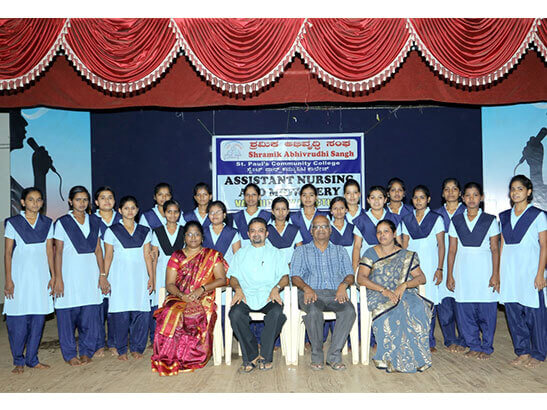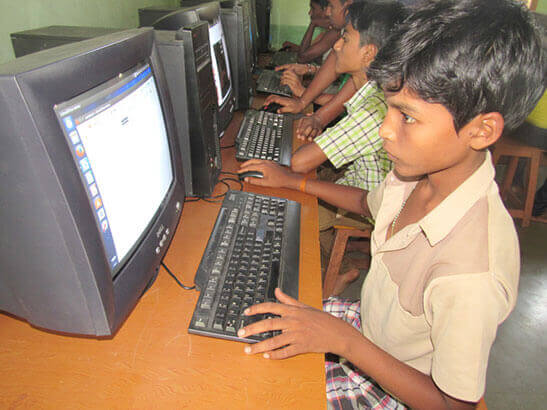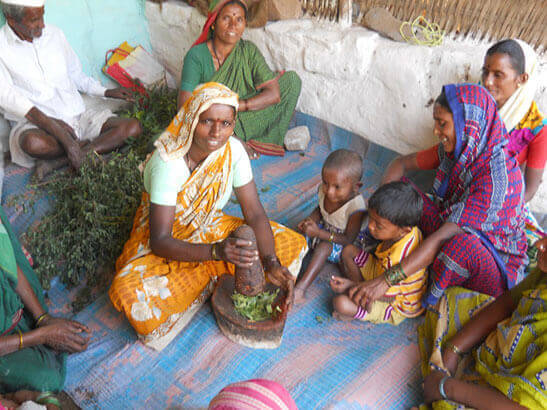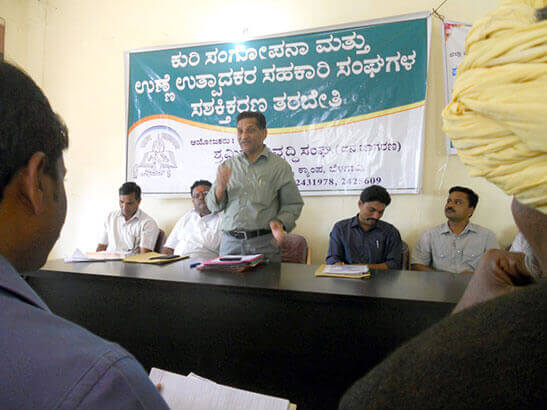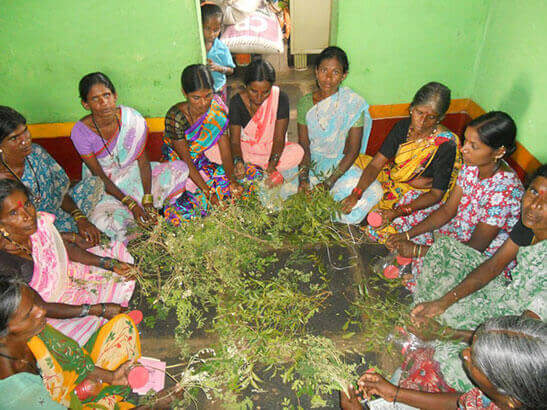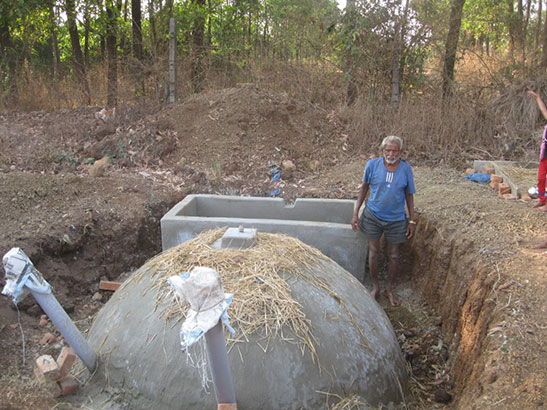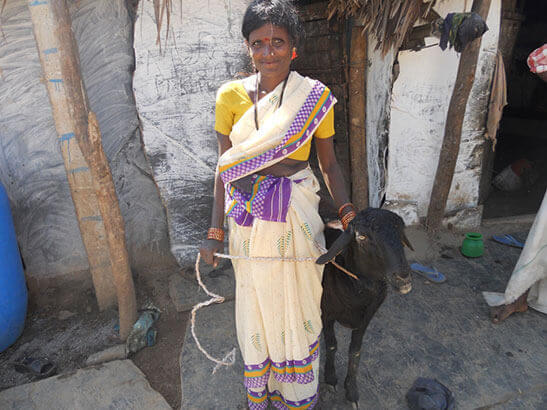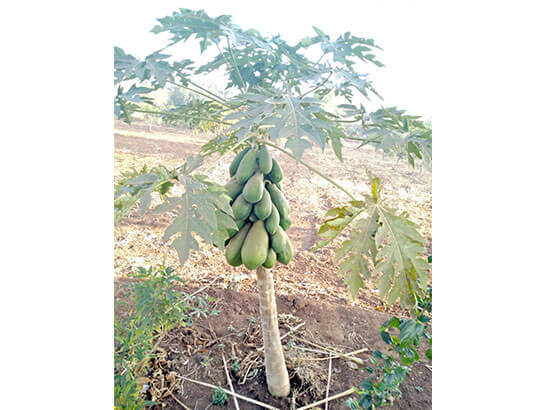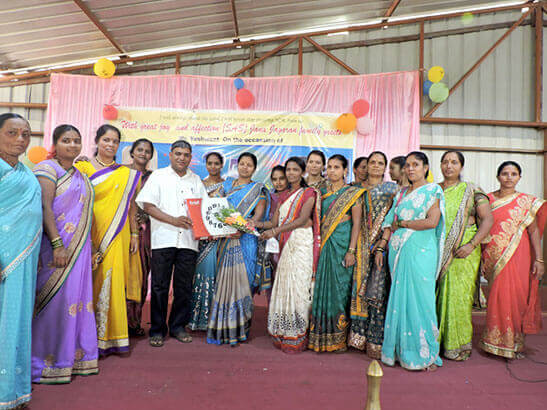BIOGAS AND RURAL SANITATION
SAS provides modern sanitary facility and easy cooking fuel to rural households and thereby reduces the workload of women and enhances their health. It gives a boost to a-forestation and renewable energy technology. It increases soil fertility by providing plenty of organic manure. It is a step forward in mitigating greenhouse gas emissions, e.g., MH4 and saving our blue planet.
| An article on the contribution by SAS towards a green world is published in the well known magazine 'JIVAN-News and Views of Jesuits in India' |
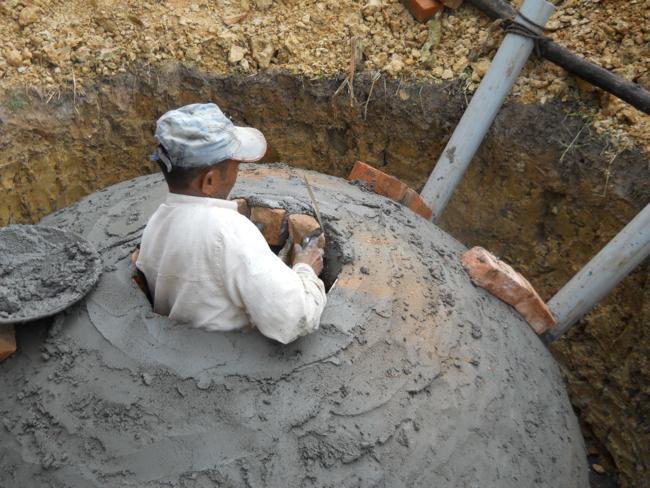 |
||
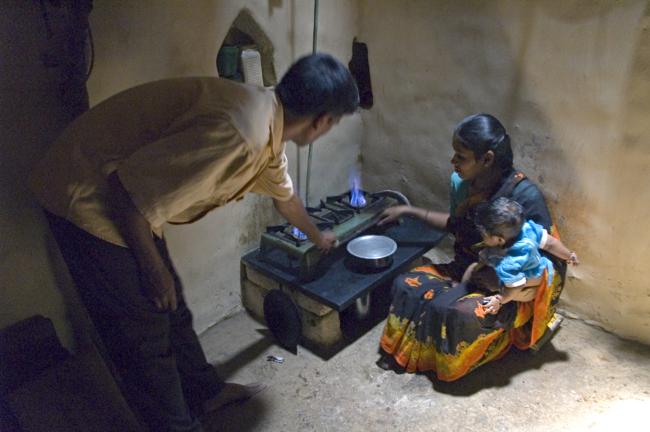 |
|
STORY OF SUSHILA - An Ecological Approach to Development |
|
| We belong to the tribal community called Naik. Our tribe is also known under the names Berad and Valmiki. During the British colonial period our tribe was listed as a criminal tribe. When there were cases of cattle lifting, illicit liquor making or dacoity our men folks were rounded up and harassed by the police. I felt sad about it. It is said that the sage Valmiki who wrote the world famous epic Ramayana was from our tribe. I feel proud to hear that. | |
| When my parents told me that I was to be given in marriage to Kattanbhavi village I was scared. I thought that I was condemned to misery for life. I was told that Kattanbhavi village had no easy access to drinking water. Women had to walk 1.5 km down the valley to fetch water. Getting firewood for cooking was another major issue. Jungles close to the village had vanished. It meant a long trek over the barren hills in search of firewood. I did not have a say in the matter of my marriage. I just had to nod to what was already settled by the elders. I considered myself lucky, when I learnt that my husband had a small job in Gogte Mills in Belgaum and some land. | |
| Life in Kattanbhvi was tough. With great difficulty we eked out a living from the little land we had and from the wages my husband brought home. I took care of the children, made numerous difficult and tiring trips for water and firewood, did all the cooking, washing and house cleaning and also worked on our land during rainy season and went for wage labour at other times. I used to be up by 5 am and could go to sleep only by 10 pm. | |
| From the year 1992 I saw a lot of changes taking place in our village. Fr. Joe, a Jesuit priest and social workers from his organization Jana Jagaran, were frequent visitors to our village. Jana Jagaran conducted night schools for the school dropouts and the illiterates. They motivated the elders to undertake a watershed programme. From 1993 Jana Jagaran along with the people of the village initiated many works in the village for rainwater harvesting. We understood that rainwater harvesting was the only solution to our drinking water problem and deteriorating environment. We learnt about the importance of counter trenching, land levelling, terracing, gully plugs, check dam, mud dam and a-forestation. We got regular work with wages under this project. | |
| Slowly the face of the village began to change. The watershed project helped in recharging the ground water table. The problem of drinking water was fully solved. We have now many more trees in the village. The barren hills look greener. The yield from agriculture has increased many folds. There is plenty of fodder and grass for the animals. Many young people who migrated to cities in search of work returned to Kattanbhavi. Jana Jagaran had told us about the usefulness of biogas plants cum toilets. But due to lack of water in the village only a few families came forward initially to build biogas. But when the water problem was solved many more families built biogas plants. Many families bought milk animals. |
|
| With the wages I earned from the work in watershed programme and a small loan from our women’s self group I bought a cow. I too wanted to build a biogas plant cum toilet. But I was hesitant. I found the idea of cooking on gas produced from dung and night soil difficult to digest. Social workers of Jana Jagaran tried to convince me. They took me to the houses of Karevva, Laxmi and Bharati. These neighbours showed me their biogas cum toilet units. | |
| They made me drink tea and taste food cooked on biogas stove. It tasted as good as any other tea, any other food. But I was still confused. Once Fr. Joe, Director of Jana Jagaran came to my house. He asked me, ‘Sushila, on what do people in the village normally cook?’ I replied, ‘On fire wood, on kerosene, and some on petroleum gas’. Joe did not agree! He laughed and said, ‘Nobody cooks on firewood, kerosene or gas, but everybody cooks on FIRE and fire is holy and sacred. It is the great purifier. When gas is lit there is no more gas but only fire and it is on fire that everybody cooks’. Joe took me to my neighbour Karevva’s kitchen for a demonstration. He opened the gas tap but did not light the stove. |
|
| The place stunk of rotten egg. Joe said, ‘This is the smell of biogas and I don’t like this stink’. Then he closed the tap. The foul smell disappeared. Joe held a lit matchstick over the stove and opened the tap again. There was a beautiful blue flame over the stove but no foul smell. Joe said, ‘What you see now is not gas but fire, and we cook on fire’. This did the trick and I decided to have a biogas cum toilet unit. The cost of it was beyond what I could manage. Jana Jagaran promised to get for the unit subsidy from the government on my behalf. I and my family members supplied the manual labour needed for digging the pit and for assisting the skilled masons at the time of construction. The rest was the contribution of Jana Jagaran. My plant is already many years old. It is working beautifully well. |
|
| I feel happy and proud. I never thought that this intervention by Jana Jagaran would bring in so many changes in my life and help me to come out of my poverty and misery. Because of the biogas cum toilet unit:
|
|
|
It is no exaggeration to say that biogas cum toilet units brought about a mini-revolution in my village. It has effectively arrested the deterioration of ecology by putting an end to cutting of trees and helping us to plant more trees. The increased availability of organic manure made our land fertile again. The increase in fodder and crop residues encouraged us to have more milk animals. More milk, more water, more crops, more trees, and more job opportunities - my village is becoming richer. I am happy that I am in Kattanbhavi. Translated by Fr. Joseph Chenakala S.J. |
|
|
BIOGAS ALTERNATIVE Energy is the key word. Every system human, animal, plant, the cosmos itself revolves around energy. Energy is needed not only for survival but also for healthy all round development. Higher the consumption of energy higher would be the growth. The per capita energy consumption of a developed country like USA is around 8000 Kwh whereas in a country like India it is around 100 Kwh only. This wide disparity in energy consumption is very clearly reflected in the socio-economic status of the people.
The most commonly used energy resources all over the world at present are oil, gas, coal and nuclear energy. India has limited proven reserves of oil. Indigenous production meets two third of the oil requirements but this ratio is going down. India does not have the means to tap the proven reserves at the desired pace.
Natural Gas as a source of energy is a recent phenomenon in India. India is not fully geared up to adequately utilize the natural gas that is produced. Hence large quantities of gas have to be flared up.
India has vast reserves of coal. But the quality of coal is not to the desired extent. Coal is highly pollutant. These factors along with cost of transportation make coal as a source of energy less attractive.
The hydraulic and nuclear energy options too are hazardous and so they are not real options. Hence the need to harness the non-conventional sources of energy – solar, wind, bio-mass.
India has made significant strides in the use of Biogas in rural areas. India is one of the forerunners in the Biogas technology. It has been successful in India due to:
Biogas technology
Biogas Plant is a device for conversion of fermentable organic matter, in particular human and animal wastes, such as cow dung, poultry droppings into combustible gas and fully matured organic manure. This is achieved by subjecting the material to anaerobic fermentation. Different groups of bacteria act upon the organic materials to produce Biogas rich in methane. Methane, being lighter than air, rises out of the system and can be collected and used for various purposes.
Domestic fuel and light
Sanitation and health
Better manure
Better Eco system
The composition of the gas produced varies with the material used for fermentation. On an average, the gas got from cattle dung consists of 55 to 65 per cent methane and 40 to 45 per cent carbon-dioxide with negligible amount of H2S, hydrogen, etc. One Kg of cattle dung gives 1.3 cft of gas. It is found that the process of digestion and gasification is at the highest when temperature is around 35oC.
The major source of domestic kitchen fuel in Indian villages is wood and cattle dung. The method of burning these is extremely wasteful. The conventional method realizes only 17% of potential heat in the case of wood and 11% in cattle dung cakes. Thus 83% of the firewood and 89% of the dung cakes are wasted in the conventional ovens.
Designs
There are basically two tested and field-worthy designs of Biogas plants. They are:
1. Floating gas holder type
This design was first developed in India in 1954. The Khadi and Village Industries Commission (KVIC), Mumbai, adopted it for promotion in 1962. So this model is known as KVIC model.
2. Fixed dome type
Deenbandhu (friend of the poor) model has a semi spherical digester with a conical bottom. The plant has a displacement chamber connected to the main digester. When gas gets collected in the digester it exerts pressure on the slurry and it pushes the slurry out into the displacement chamber. When gas is used the displaced slurry flows back into the digester to fill the vacuum created. Deenbandhu is the most efficient and cheapest model available.
It has been accepted for promotion under the National Project for Biogas Development. Deenbandhu model plants cost about 45 % less than the KVIC plants of comparable sizes.
While designing Deenbandhu model, an attempt has been made to minimize the surface area of the plant to reduce its installation cost without sacrificing the efficiency.
Biogas and Belgaum district
Belgaum District has made a remarkable contribution to the National Project for Biogas Development. Belgaum was declared time and again the number one district of the country in the implementation Biogas Development Project.
What gave a big boost in the construction and commissioning of Biogas plants in the district is the role played by the Turn-Key Agencies. The government’s decision to decentralize the implementation of Biogas Project by involving Turn-Key Agencies has given the program very rich dividends. Almost 90% of the Biogas plants constructed and commissioned during the last decade has been constructed and commissioned by Turn-Key Agencies.
Role played by Turn-Key Agencies
Shramik Abhvrudhi Sangh (Jana Jagaran), one of the leading the NGOs in Belgaum District, has constructed and commissioned more than fifteen thousand biogas plants cum toilet units for rural households in Belgaum District.
Besides, Jana Jagaran conducts training programs for rural masons in the techniques of Deenbandhu biogas plant construction.
During the training JJ insists on:
JJ trains the beneficiaries in the maintenance of biogas plants and efficient use of gas and slurry. It also convinces the beneficiaries about the advantages of linking a toilet and helps them to overcome cultural barriers in using biogas as a cooking fuel.
Introduction of biogas plant brings a better living environment to rural families. It has been a boon to the rural women. It provides them with cheap and efficient cooking fuel and saves them from the smoke filled kitchens and gives them the luxury of a clean and safe toilet. It provides a large quantity of high-class organic manure. Trees in the fields and the jungles around get a lease of life. In short it is no exaggeration to state that biogas program has brought about a mini revolution in the rural areas of Belgaum District.
Belgaum District
Belgaum district extends over a total area of 13,415 Sq. Kms. Out of the total area of 1,344,382 hectares in the district, the forest cover is over 190,424 hectares, which accounts for 14.16% of the land. The district has a livestock population of over 2,048,600 with a highest live stock density of 153 animals per sq. Km. The district has 19 Towns and 1178 villages and some hamlets.
Keeping in view the cattle population and the number of rural households, Belgaum is assessed to have the potential for the construction of over 834,000 three cubic meter biogas plants.
The Advisory Board on Energy, in its report “Toward a Perspective on Energy Demand and Supply in India in 2004/5”, has estimated the Indian potential for family-based Biogas plants at 16 - 22 million. These plants can deliver the energy equivalent of 13.4 million tones of kerosene oil and fertilizer equivalent of 4.4 million tones.
(Some of the Tech. Data is from “Khadi & Village Industries Commission and its Non-conventional energy Programs” – Gramodaya, 3 Irla Rd, Vile Parle(west) Mumbai – 400056)
Fr. Joseph Chenakala, S.J.
(Joseph Chenekala, S.J. is a Jesuit priest, an advocate and an anthropologist. He is the founder of the NGO Shramik Abhivrudhi Sangh (Jana Jagaran). The basic thrust of this NGO is empowerment of the common man for sustainable development and community building. It tries to put the common man at the center of development and the eco-system. It believes in an integrated approach to development. Formal, non-formal and mass education, skill training, promotion of renewable energy, organic farming, rainwater harvesting, all such activities come under the preview of Jana Jagaran. He can be contacted at jchenakala@gmail.com)
|

